You searched for: ghettos
<< Previous | Displaying results 61-70 of 1236 for "ghettos" | Next >>
-

-
Sign from Shanghai Ghetto
ArtifactOne of many signs displayed along the Shanghai ghetto's boundaries: "Stateless Refugees are Prohibited to Pass Here without Permission". This plaque was removed by a refugee at the end of the war. [From the USHMM special exhibition Flight and Rescue.]
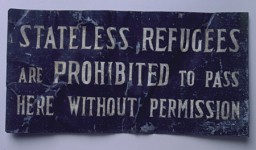
-
Street scene in the Warsaw ghetto
PhotoStreet scene in the Warsaw ghetto. The sign at left announces: "Soup in the courtyard, first floor, apt. 47." Warsaw, Poland, 1940-1941.
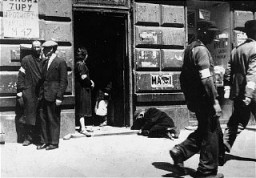
-
Model of the Lodz ghetto
ArtifactLeon Jakubowicz, a shoemaker by training and a native of Lodz, began constructing this model of the Lodz ghetto soon after his arrival there from a prisoner-of-war camp in April 1940. The case holds a scale (1:5000) model of the ghetto, including streets, painted houses, bridges, churches, synagogue ruins, factories, cemeteries, and barbed wire around the ghetto edges. The model pieces are made from scrap wood. The case cover interior is lined with a collection of official seals, a ration card, and paper…
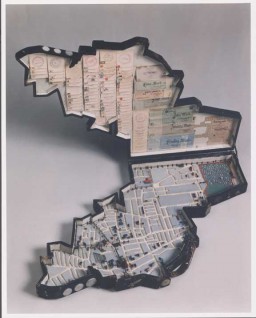
-
Conditions in the Warsaw ghetto
FilmThe Nazis sealed the Warsaw ghetto in mid-November 1940. German-induced overcrowding and food shortages led to an extremely high mortality rate in the ghetto. Almost 30 percent of the population of Warsaw was packed into 2.4 percent of the city's area. The Germans set a food ration for Jews at just 181 calories a day. By August 1941, more than 5,000 people a month succumbed to starvation and disease.
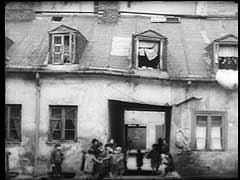
-
Conditions in the Warsaw ghetto
FilmThe Nazis sealed the Warsaw ghetto in mid-November 1940. German-induced overcrowding and food shortages led to an extremely high mortality rate in the ghetto. Almost 30 percent of the population of Warsaw was packed into 2.4 percent of the city's area. The Germans set a food ration for Jews at just 181 calories a day. By August 1941, more than 5,000 people a month succumbed to starvation and disease.
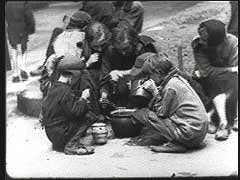
-
Warsaw ghetto uprising, 1943
MapThe city of Warsaw is the capital of Poland. Before World War II, Warsaw was the center of Jewish life and culture in Poland. Warsaw's prewar Jewish population of more than 350,000 constituted about 30 percent of the city's total population. The Warsaw Jewish community was the largest in both Poland and Europe, and was the second largest in the world, behind that of New York City. The Germans occupied Warsaw on September 29, 1939. In October 1940, the Germans ordered the establishment of a ghetto in…

-
Ruins of the Warsaw ghetto
PhotoRuins of the Warsaw ghetto after the Warsaw ghetto uprising. Poland, May 1943.
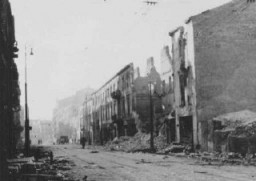
-
Ghettos in occupied Poland, 1939-1941
MapGermany occupied western Poland in fall 1939. Much of this territory was annexed to the German Reich. Eastern Poland was not occupied by German forces until June 1941. In south-central Poland the Germans set up the Generalgouvernement (General Government), where most of the early ghettos were established. Ghettos were enclosed districts of a city in which the Germans forced the Jewish population to live under miserable conditions. Ghettos isolated Jews by separating Jewish communities both from the…

